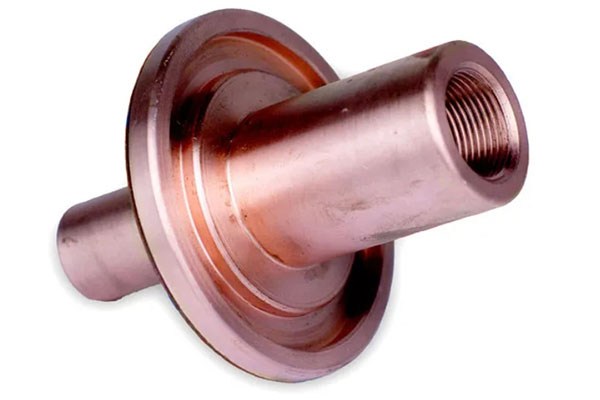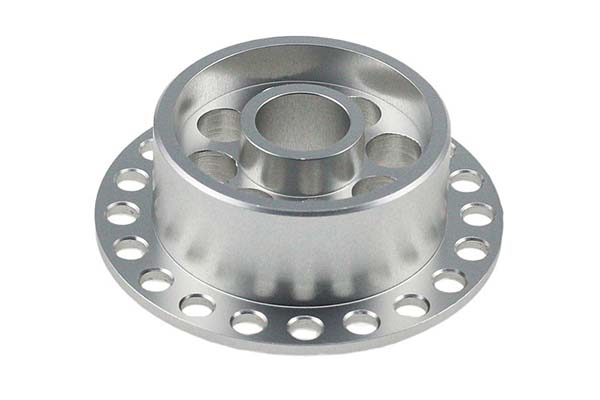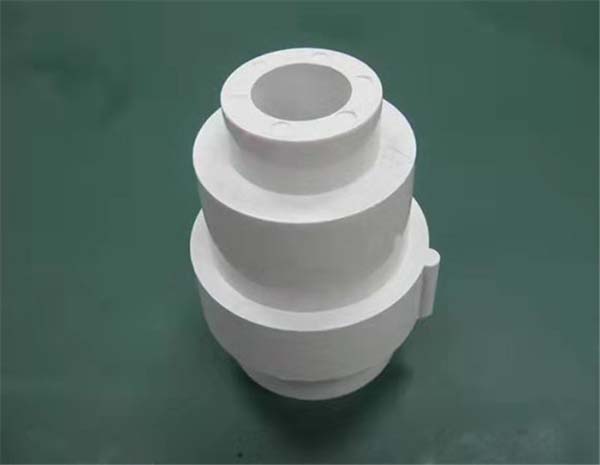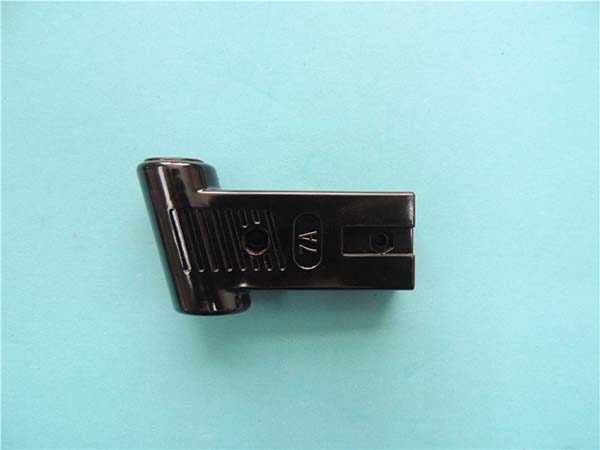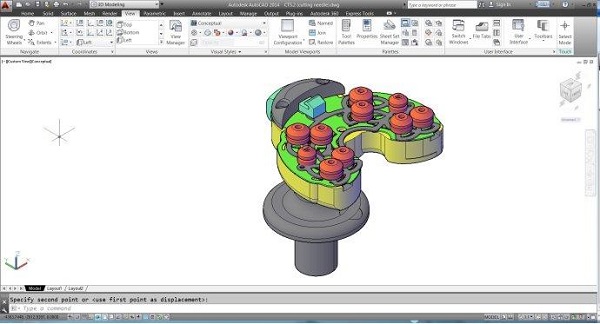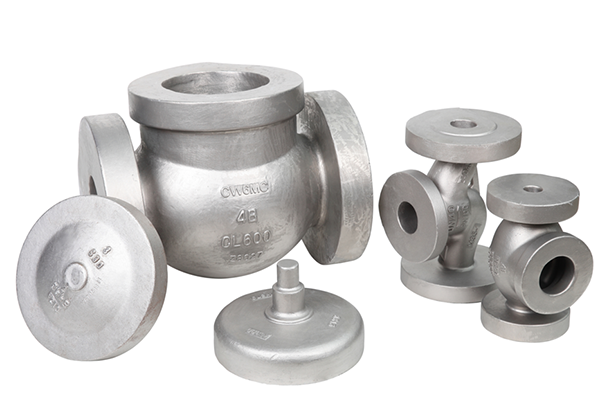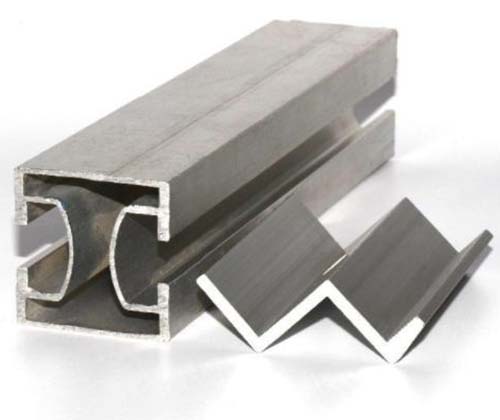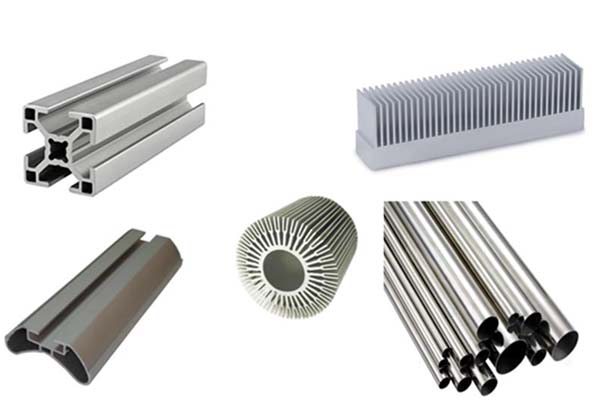1. Introduction: Balancing Cost and Innovation in Prototyping
In today’s highly competitive market, businesses across all industries are constantly on the lookout for ways to gain an edge. One crucial aspect of this pursuit is the development of new products, and at the heart of successful product development lies rapid prototyping. But what exactly is rapid prototyping, and why is finding affordable solutions so important?
In the following sections, Yigu Technology will explore some of the most affordable rapid prototyping solutions available, compare their costs, capabilities, and applications, and provide practical tips on how to choose the right solution for your specific project needs. Whether you’re a product designer looking to bring your next big idea to life or a business owner aiming to optimize your product development process, this article will serve as a valuable resource for understanding and leveraging affordable rapid prototyping technologies.
2. Core Affordable Rapid Prototyping Technologies
2.1 Fused Deposition Modeling (FDM)
Fused Deposition Modeling (FDM) stands out as a go - to option for those seeking budget - friendly rapid prototyping solutions. This technology operates by melting thermoplastic filaments, such as PLA (Polylactic Acid), ABS (Acrylonitrile Butadiene Styrene), and PETG (Polyethylene Terephthalate Glycol - modified), and then extruding them layer by layer to build a three - dimensional object.
2.2 Stereolithography (SLA)
Stereolithography (SLA) offers a balance between cost and precision, making it an attractive option for those who need high - quality, detailed prototypes. SLA works by using a UV laser to cure layers of liquid photopolymer resin, building up the prototype layer by layer.
2.3 Selective Laser Sintering (SLS)
Selective Laser Sintering (SLS) is a rapid prototyping technology that offers a good balance between cost and functionality. SLS uses a high - power laser to sinter powdered materials, such as nylon, together to form a solid object.
2.4 CNC Machining (Subtractive Prototyping)
CNC (Computer Numerical Control) machining, although traditionally associated with higher costs, now offers affordable options for rapid prototyping, especially for metal and plastic parts. CNC machining involves using computer - controlled machines to remove material from a solid block, creating the desired shape.
2.5 Vacuum Casting
Vacuum casting is an excellent choice for low - volume production of plastic parts. It is a process that involves creating a silicone mold from a master pattern and then casting liquid polyurethane resin into the mold under vacuum to create the final part.
2.6 Cost Comparison Table
The following Yigu Technology table provides a quick overview of the cost, lead time, material options, and ideal applications for each of the rapid prototyping technologies discussed above:
| Technology | Cost per Part (USD) | Lead Time | Material Options | Ideal for |
| FDM | 10–50 | 24–48 hours | PLA, ABS, PETG | Low - cost visual prototypes |
| SLA | 50–200 | 12–36 hours | Resins (acrylic, epoxy) | High - precision designs |
| SLS | 100–300 | 24–72 hours | Nylon, composite powders | Functional, durable parts |
| CNC Machining | 200–500 | 48–96 hours | Metals, engineering plastics | High - tolerance components |
| Vacuum Casting | 150–400 | 5–7 days | Polyurethane, elastomers | Small - batch production |
This table can serve as a useful reference when comparing different rapid prototyping solutions for your project. It's important to note that these are general estimates, and actual costs and lead times may vary depending on specific project requirements and the service provider you choose.
3. Key Factors in Choosing Affordable Solutions
3.1 Project Scale
The scale of your project plays a pivotal role in determining the most affordable rapid prototyping solution.
For single prototypes, Fused Deposition Modeling (FDM) or Stereolithography (SLA) can be highly cost - effective. FDM, with its low - cost entry point due to the availability of affordable desktop printers, is great for quickly visualizing a design concept. For Yigu Technology example, a startup developing a new handheld device can use an FDM printer to create a single - unit prototype of the device's casing. This allows them to test the ergonomics and basic form of the product without investing a large amount of money. SLA, on the other hand, offers a higher - quality finish for a single prototype. If a jewelry designer wants to create a one - of - a - kind piece for a high - end client, SLA can produce a prototype with intricate details and a smooth surface, which is crucial for the aesthetics of the final product.
When dealing with small batches of 10 - 50 units, Vacuum Casting or Selective Laser Sintering (SLS) are better options. Vacuum casting is ideal for producing small - batch plastic parts with high surface quality. A small - scale toy manufacturer, for instance, can use vacuum casting to create a limited run of new toy prototypes. The process can accurately replicate the final product's shape and surface finish, enabling the manufacturer to test the market response with a small investment. SLS is also suitable for small - batch production, especially when the parts need to be functional and durable. A company developing small mechanical components for a new product line can use SLS to produce a batch of prototypes for functional testing. The high tensile strength of SLS - printed parts makes them suitable for applications where the components will be subjected to mechanical stress.
In terms of complex geometries, different technologies are preferred based on the material requirements. For plastic parts with intricate details, SLA or SLS are excellent choices. SLA's high precision allows it to create parts with complex internal channels and fine features, such as those found in some medical devices or high - end consumer electronics. SLS, with its ability to build without support structures in many cases, can create complex geometries with ease. For metal parts that require high precision, CNC machining is often the go - to solution. In the aerospace industry, where parts need to meet strict tolerances and be made from high - strength alloys, CNC machining is used to create complex metal brackets and components.
3.2 Material Requirements
Material requirements are another crucial factor in choosing an affordable rapid prototyping solution.
For low - stress applications, materials like PLA (used in FDM) are a great choice. PLA is easy to print with FDM technology, and it is relatively inexpensive. A hobbyist creating a small decorative item or a simple household organizer can use PLA filament in an FDM printer. The quick printing speed and low cost of PLA make it possible to produce multiple iterations of the design at a low cost. Additionally, PLA is biodegradable, which can be an advantage for environmentally conscious projects.
When high - strength needs are involved, materials such as nylon (used in SLS) or aluminum (machined with CNC) are more appropriate. Nylon parts produced by SLS have high tensile strength, making them suitable for applications where the prototype will be tested under mechanical stress, such as in automotive or industrial equipment. For example, a company developing a new gear system can use SLS - printed nylon prototypes to test the functionality and durability of the gears. Aluminum, on the other hand, is a popular choice for high - strength metal prototypes. CNC machining can precisely shape aluminum into complex parts, and aluminum's strength - to - weight ratio makes it suitable for applications in aerospace and automotive industries, such as creating engine components or structural parts.
For aesthetic prototypes, resins used in SLA are highly favored. SLA - printed parts have a smooth surface finish right out of the printer, often requiring minimal post - processing. A product design studio working on a new consumer product, like a smartphone or a smartwatch, can use SLA to create aesthetic prototypes. The smooth surface of the SLA - printed parts can accurately represent the final product's appearance, allowing for better evaluation of the design's aesthetics and user appeal.
3.3 Post - Processing Costs
Post - processing costs can significantly impact the overall affordability of a rapid prototyping solution.
FDM - printed parts often require post - processing to achieve a better surface finish. Sanding and painting are common post - processing steps for FDM parts. On average, these post - processing steps can add \(20 - \)50 extra per part. For example, if a company is producing 10 FDM - printed prototypes, the post - processing costs could range from \(200 - \)500. The rough surface of FDM parts, with a surface roughness of 50 - 100 μm Ra, needs to be smoothed out through sanding, and then painted to achieve the desired appearance. However, these additional costs need to be factored in when considering FDM as a prototyping solution.
In contrast, SLA and vacuum - casting often need minimal finishing. SLA parts come out of the printer with a relatively smooth surface, and the post - processing mainly involves removing any remaining resin and perhaps a light cleaning. Vacuum - cast parts also have a good surface quality, similar to injection - molded parts, and usually do not require extensive post - processing. This reduces the hidden costs associated with post - processing, making SLA and vacuum casting more cost - effective in terms of the overall prototyping budget when a smooth surface finish is required without the need for additional costly finishing steps.
4. Industry Applications: Affordable Prototyping in Action
4.1 Automotive: Balancing Speed and Durability
In the automotive industry, rapid prototyping plays a crucial role in reducing development time and costs while ensuring high - quality products. Two prominent examples of how affordable rapid prototyping solutions are being utilized are Tesla and Volkswagen.
Tesla has been at the forefront of using Fused Deposition Modeling (FDM) for early - stage battery enclosure prototypes. By opting for FDM, Tesla has managed to cut its design cycles by a staggering 60% compared to traditional machining methods. This significant reduction in time allows the company to quickly iterate on its battery enclosure designs, testing different configurations for optimal performance, safety, and cost - effectiveness. For example, FDM enables Tesla to rapidly produce multiple prototypes with variations in material thickness, internal structure, and cooling channels. These prototypes can then be tested for thermal management, mechanical integrity, and compatibility with other vehicle components. The low cost per part of FDM, starting at around \(10 - \)50, makes it an attractive option for creating these early - stage prototypes in large quantities.
Volkswagen employs vacuum casting for interior component batches. Vacuum casting offers high surface quality and material properties similar to injection - molded parts, but at a much lower cost for small - batch production. By using vacuum casting, Volkswagen has reduced its tooling costs by 50% compared to injection molding. This cost - saving measure is especially beneficial when producing interior components such as dashboard parts, door handles, or center console elements. For Yigu Technology instance, when developing a new interior design concept for a particular car model, Volkswagen can use vacuum casting to create a small batch of prototypes. These prototypes can be used for in - house testing, customer surveys, and design reviews. The process takes about 5 - 7 days for mold creation and part production, which is a reasonable time frame considering the high - quality results obtained.
4.2 Healthcare: Precision on a Budget
The healthcare industry demands high - precision prototypes, and affordable rapid prototyping solutions are making it possible to achieve this without breaking the bank. Stryker and dental clinics are great examples of how these solutions are being effectively used.
Stryker, a leading medical technology company, uses Stereolithography (SLA) to print surgical guides based on patient CT scans. These SLA - printed surgical guides have reduced orthopedic surgery time by 25% while costing 40% less than custom - machined tools. SLA's high precision, with an accuracy of ±0.05mm, allows for the creation of surgical guides that precisely fit the patient's anatomy. This precision not only shortens the surgery time but also improves the accuracy of the surgical procedure, leading to better patient outcomes. For example, in a hip replacement surgery, the SLA - printed surgical guide can accurately guide the placement of the implant, reducing the risk of misalignment and improving the long - term success of the surgery. The cost - effectiveness of SLA, with a cost per part ranging from \(50 - \)200, makes it a viable option for producing these patient - specific surgical guides.
Dental clinics are increasingly using desktop FDM printers to produce affordable aligner prototypes. By using FDA - approved filaments like NinjaFlex, dental professionals can create custom - fit aligner prototypes for their patients. FDM's affordability, with a low - cost entry point due to the availability of desktop printers, makes it accessible to dental clinics of all sizes. For instance, a small dental practice can invest in a desktop FDM printer for as little as $300 and start producing aligner prototypes in - house. This reduces the need to outsource the prototyping process, saving both time and money. The ability to quickly produce and test different aligner designs also allows for better patient - dentist communication and more personalized treatment plans.
4.3 Consumer Goods: Rapid Design Validation
In the consumer goods industry, the ability to quickly validate designs is crucial for staying competitive. Apple and startup innovators like Anker are leveraging affordable rapid prototyping solutions to achieve this.
Apple uses Selective Laser Sintering (SLS) to print polymer cases for early iPhone ergonomic testing. SLS - printed parts have high tensile strength, which is important for creating durable prototypes that can withstand the rigors of testing. By using SLS, Apple has been able to accelerate user feedback by 30%. For Yigu Technology example, during the development of a new iPhone model, Apple can use SLS to quickly produce multiple polymer case prototypes with different shapes, sizes, and grip textures. These prototypes can then be distributed to a group of users for ergonomic testing. The high - strength SLS - printed cases can endure normal handling and usage during this testing phase, providing valuable feedback on how the final product will feel in the hands of consumers. The cost per part for SLS, ranging from \(100 - \)300, is a reasonable investment considering the importance of user - centered design in the highly competitive smartphone market.
Anker, a well - known startup in the consumer electronics industry, uses Alibaba’s affordable CNC machining services for aluminum prototype chargers. By doing so, Anker can produce aluminum prototype chargers at a cost of \(300 per part, compared to \)1,000 via local manufacturers. This significant cost - saving measure allows Anker to invest more in other aspects of product development, such as research and development of advanced charging technologies. CNC machining's high precision, with tolerances as low as ±0.02mm, ensures that the aluminum prototype chargers meet the strict quality standards required for consumer electronics. For example, the precise machining of the charger's connector ports and internal components ensures proper functionality and compatibility with various devices. The ability to quickly produce high - quality aluminum prototypes also enables Anker to respond rapidly to market trends and customer demands, giving them a competitive edge in the consumer goods market.
6. Conclusion: Choosing the Right Affordable Solution
In the dynamic landscape of product development, affordable rapid prototyping solutions are the linchpins that enable businesses to innovate without being hampered by exorbitant costs. As we've explored, there is no one - size - fits - all approach to rapid prototyping. Each technology—FDM, SLA, SLS, CNC machining, and vacuum casting—has its own set of strengths, limitations, costs, and ideal applications.
FDM, with its low - cost entry point and accessibility, is a great choice for those looking to quickly visualize design concepts or create low - cost visual prototypes. Its ability to use a variety of thermoplastic filaments makes it versatile for different types of projects. However, its rough surface finish and relatively lower mechanical strength limit its use in applications where aesthetics and high - stress resistance are crucial.
SLA offers a balance between cost and precision, making it ideal for creating high - precision designs with smooth surface finishes. It is widely used in industries such as healthcare, automotive, and consumer electronics, where intricate details and a good surface quality are essential. But the brittleness of the resins and the toxicity concerns associated with them need to be carefully considered.
SLS provides durable and functional parts, making it suitable for applications that require high - strength components for functional testing. Its ability to create complex geometries without extensive support structures is a significant advantage. However, the higher energy consumption and relatively rough surface finish may be drawbacks in some cases.
CNC machining, despite being on the higher - cost side compared to some 3D - printing methods, offers unrivaled precision and is the go - to solution for applications that demand high - tolerance components, especially in the aerospace and medical industries. But the high material waste and time - consuming setup for complex geometries are factors that need to be weighed.
Vacuum casting is the best option for small - batch production of plastic parts with high surface quality. It bridges the gap between prototyping and low - volume production, allowing manufacturers to produce a limited number of parts that closely resemble the final product. But its limitation to simple geometries and lower temperature resistance should be taken into account.
When choosing an affordable rapid prototyping solution, businesses must prioritize their project scale, material needs, and post - processing requirements. By carefully evaluating these factors, companies can make an informed decision that will not only save costs but also lead to more efficient product development cycles.
In Yigu Technology conclusion, affordable rapid prototyping technologies have democratized the product development process. They have made it possible for startups, SMEs, and even large corporations to bring their innovative ideas to life faster, iterate more efficiently, and reduce waste. By leveraging these solutions effectively, businesses can gain a competitive edge in the market, bringing high - quality products to consumers in a timely and cost - effective manner.
FAQ
1. Which rapid prototyping technology is best for a single, low - cost prototype with basic functionality?
Fused Deposition Modeling (FDM) is an excellent choice. It has a low cost per part, starting at around \(10 - \)50, and is accessible with affordable desktop printers. It can quickly produce a prototype for basic functionality testing, although the surface finish may be rough and require post - processing.
2. Can I use SLA for functional prototypes in a high - stress environment?
SLA is not ideal for high - stress environments. The resins used in SLA are brittle, and the parts may break or crack easily under high stress. For high - stress functional prototypes, technologies like Selective Laser Sintering (SLS) or CNC machining, which can produce stronger parts, are more suitable.
3. How does the cost of vacuum casting compare to injection molding for small - batch production?
For small - batch production (up to 50 units), vacuum casting is much more affordable. The cost per part for vacuum casting ranges from \(150 - \)400, while injection molding has high tooling costs that make it expensive for low volumes. Injection molding is more cost - effective for large - scale production, typically for batches of 1000 units or more.
